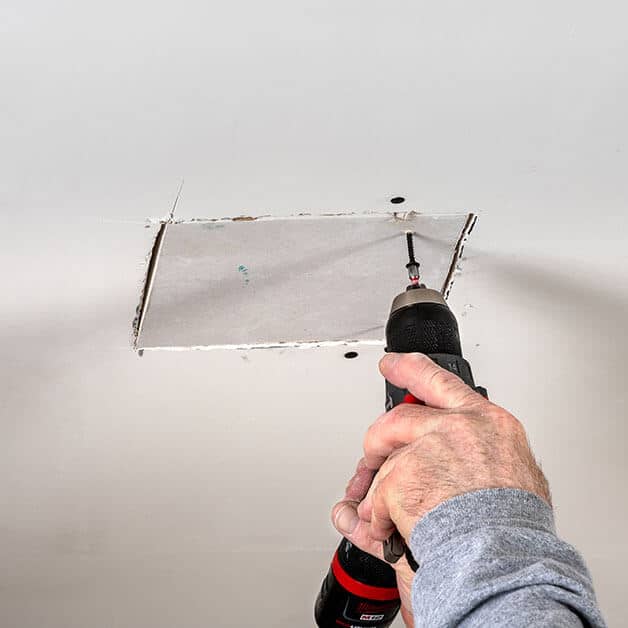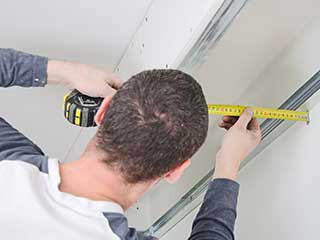A Comprehensive Guide to Mastering Drywall Repair Work and Installment
This guide supplies a complete exploration of drywall repair work and installment, accommodating both beginners and skilled professionals. It outlines crucial devices, methods for patching and hanging sheets, and the vital completing procedures. drywall contractors. By understanding common pitfalls, people can attain polished outcomes. Mastering these abilities not only improves one's home yet also constructs confidence in do it yourself endeavors. What fundamental ideas will assure an effective project from start to complete?
Essential Tools for Drywall Fixing and Setup
When beginning on drywall fixing and installment, a couple of necessary tools can significantly enhance the efficiency and top quality of the job. A drywall knife, usually offered in different sizes, is important for using joint compound and smoothing joints. A taping knife is likewise required for feathering edges and ensuring a seamless surface. Additionally, a drywall saw or energy blade permits accurate cutting of drywall sheets to fit any kind of area.

Step-by-Step Guide to Patching Holes
Patching openings in drywall is a straightforward process that can bring back the wall surface's look and honesty. To start, the area around the opening should be cleaned up and any loose debris got rid of. For small holes, a basic spackle or joint compound can be applied with a putty knife. Bigger openings may need a spot; an item of drywall can be reduced to fit the hole, secured with glue or screws, and afterwards taped around the edges. As soon as the patch is in place, joint compound is used over the patch and feathery bent on mix with the bordering wall surface. After the substance dries out, sanding is required to achieve a smooth finish. The fixed location can be primed and repainted to match the remainder of the wall surface. This approach assures a smooth repair work, boosting the general look of the drywall and maintaining its structural honesty.
Strategies for Hanging Drywall Sheets
After efficiently fixing holes in drywall, the following action involves hanging new drywall sheets to develop a smooth surface. To accomplish this, one need to begin by measuring the wall area precisely and cutting the drywall sheets to fit. It is vital to hang the sheets flat for far better structural honesty, starting from the top and functioning downwards.
Using a drywall lift can streamline the procedure, particularly for ceiling installments. As soon as placed, protecting the sheets with drywall screws at intervals of regarding 12 inches along the edges and 16 inches in the area is essential. This ensures a solid hold and lowers the threat of drooping. For edges, the sheets should be cut to fit well, permitting cleaner seams. Ultimately, it is a good idea to surprise the joints in between sheets to enhance the overall framework, creating a more sturdy surface ready for the next phase in the drywall installation procedure.
Finishing Touches: Insulation and Mudding
Finishing the drywall installation entails the vital actions of taping and mudding, which guarantee a sleek and smooth surface. Insulation requires the application of joint tape over the joints between drywall sheets. Drywall Installation Ogden Utah. This tape can be either paper or fiberglass harmonize, with each kind offering unique benefits. After taping, the next action is mudding, where joint substance, or "mud," is put on cover the tape and fill any flaws
Utilizing a drywall blade, the substance should be spread out equally, making certain a feathered side to lessen noticeable changes. Several layers are commonly needed, with fining sand in between each layer to achieve a smooth surface. Cautious attention during this procedure is crucial, as it considerably influences the last appearance of the wall surface. With the ideal technique and perseverance, the end result will certainly be a perfect foundation ready for painting or completing touches.
Common Errors to Prevent in Drywall Projects

An additional usual blunder is not allowing sufficient drying time in between coats, which can trap dampness and compromise the surface. Ignoring to feather the edges properly can create visible lines and flaws. Ultimately, missing sanding or using inappropriate strategies might leave rough spots. By understanding these risks, people can considerably boost the quality of their drywall jobs and accomplish a professional-looking surface.
Often Asked Inquiries
Can I Repair Drywall Without Expert Assist?
Yes, one can fix drywall without specialist help. With the right tools, materials, and advice, individuals can successfully manage small repair work. Nonetheless, considerable damage might call for specialist know-how for suitable results and resilience.
For How Long Does Drywall Compound Require To Dry?
Drywall compound normally takes in between 24 to 48 hours to dry totally, relying on variables such as humidity and temperature. Thinner layers might dry out much faster, while thicker applications need even more time for excellent results.
What's the very best Sort Of Paint for Drywall?
The most effective kind of paint for drywall is normally a water-based latex paint. It gives superb coverage, sturdiness, and simplicity of application, making it optimal for interior walls while enabling for simple clean-up with soap and water.

Just how Do I Stop Mold on Drywall?
To avoid mold and mildew on drywall, assurance appropriate ventilation, control humidity degrees, use mold-resistant materials, and quickly address any leaks. Regular evaluations and prompt removal of water damage are also important for long-lasting avoidance.
Is Drywall Recyclable After Removal?
Drywall is recyclable after removal, supplied it is devoid of contaminants like mold and mildew, paint, or other hazardous materials. Reusing centers can process it right into brand-new items, promoting sustainability and minimizing garbage dump waste in building.
When starting on drywall repair work and installation, a couple of vital tools can significantly enhance the efficiency and quality of the work. After efficiently repairing openings in drywall, the next step entails hanging new drywall sheets to produce a seamless surface area. Finishing the drywall installation entails the important steps of mudding and taping, which guarantee a smooth and sleek surface. Attaining a refined coating in drywall jobs can be challenging, and numerous typical blunders can weaken the high quality of the work. Yes, one can fix drywall without professional aid.